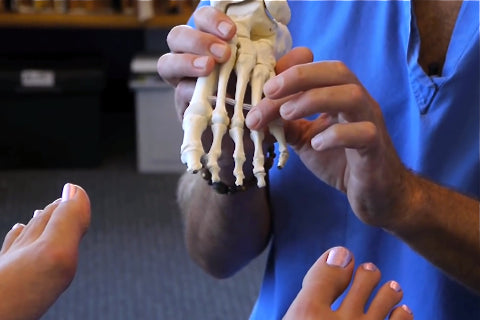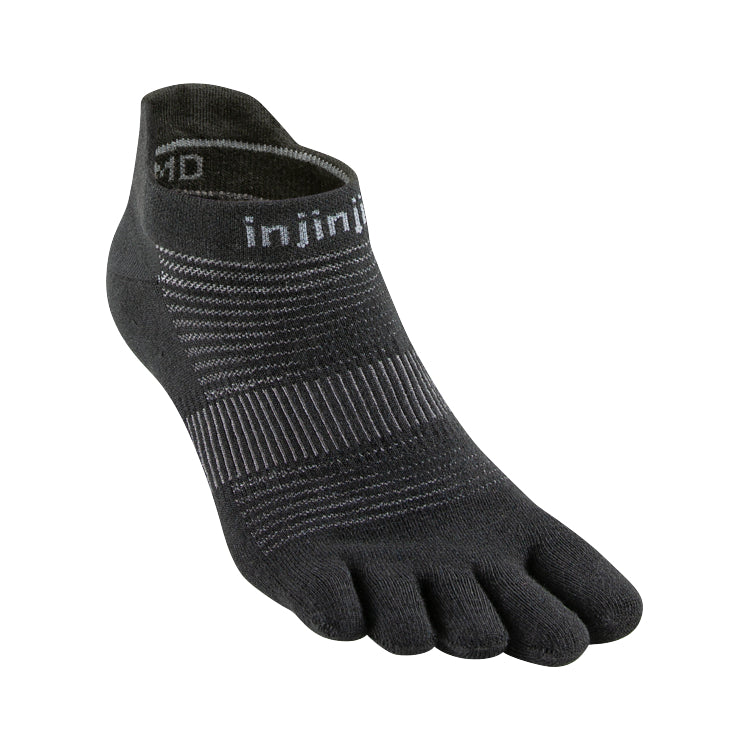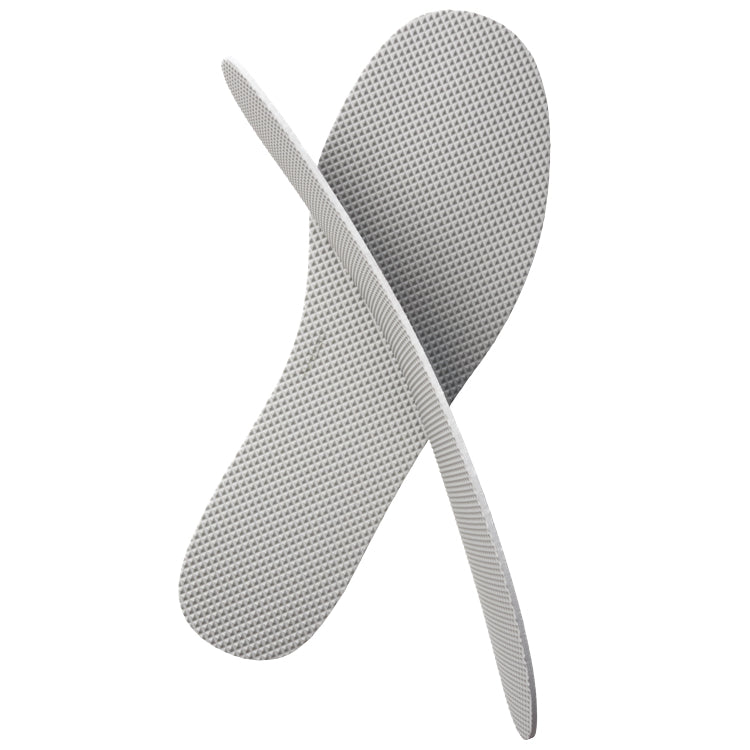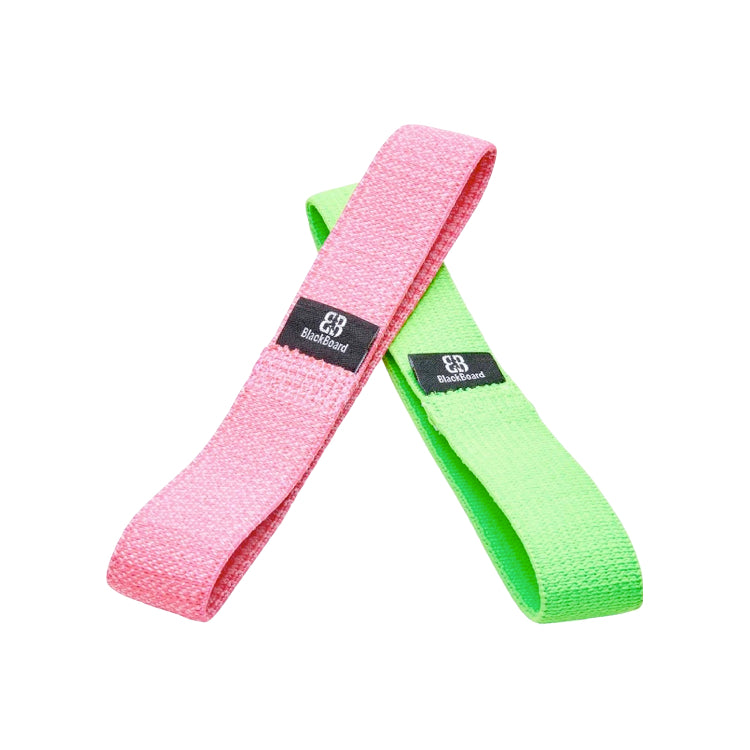
Definition
Neuroma: An enlargement of a portion of a nerve.
General Info
A neuroma is an often painful enlargement of one of the body’s nerves. Though neuromas can develop in any part of the body, they most commonly occur in the foot, usually in one of the intermetatarsal nerves. Interdigital neuroma is the name used to describe this nerve mass or enlargement. An interdigital neuroma is more likely to occur in women than men.
A neuroma can arise between any of the long bones, or metatarsals, in the foot. Morton’s neuromas are neuromas that develop between the third and fourth metatarsal bones. If a neuroma develops between any of the other metatarsal bones, it is called an interdigital neuroma, not a Morton’s neuroma. Neuromas, though considered to be growths or masses, are benign, or noncancerous, and often respond to natural foot care approaches.
Signs & Symptoms
Some of the most common signs and symptoms associated with an interdigital neuroma include:
- Foot cramping
- Foot numbness
- The sensation of walking on a lump
- A tingling sensation between the toes
- Burning, stinging, stabbing, or shooting pain in the ball of the affected foot
Possible Causes
Two unique forces are responsible for irritating nerve tissue and causing neuromas: Pinch and stretch (please see this video, which discusses this topic in more detail). An interdigital neuroma occurs when one of the intermetatarsal nerves is pinched and stretched across the ball of the foot, which happens with great frequency in people who wear shoes that possess tapering toe boxes (which pinch the intermetatarsal nerves) and toe spring and heel elevation (which stretch the intermetatarsal nerves).
Other factors that may contribute to interdigital neuromas include:
- Flat feet
- High-heeled shoes
- Excessively high foot arches
-
Bunions, hammertoes, and other forefoot problems
Helpful Strategies
Natural treatment for an interdigital neuroma involves adopting footwear that places the foot on a completely level surface and allows the toes to splay the way nature intended. A shoe that possesses toe spring, heel elevation, and toe box taper will not only stretch and pinch the foot’s intermetatarsal nerves, it will also put focal pressure or stress on the ball of the foot. This is another factor that can inflame nerve tissue in this part of the foot and cause neuromas.
For those who already have a neuroma (or for anyone, really), it’s always wise to perform the Shoe Liner Test to assess a shoe’s appropriateness before buying. Select shoes that have a removable liner or insole and stand on the liner, noting the position of the foot. If the foot is wider than the liner, that particular shoe will no doubt further irritate the neuroma by squeezing the metatarsal bones together.
Correct Toes toe spacers are an extremely helpful foot health tool in eliminating the pinch forces that contribute to interdigital neuromas, especially when they are used in combination with men’s and women’s foot-healthy footwear. A metatarsal pad is another helpful tool for relieving (or reducing) interdigital neuroma symptoms. A metatarsal pad will help spread the metatarsal bones and reduce focal pressure on the affected intermetatarsal nerve as it travels through the ball of the foot. A metatarsal pad will also help restore the forefoot fat pad to a position that protects ball of foot structures, including the intermetatarsal nerves. The proper placement of each metatarsal pad is extremely important to ensure optimal comfort and foot health benefits.
Another conservative care remedy for neuromas is anti-inflammatory supplements.
If natural approaches fail to resolve this problem, some foot care providers may recommend a cortisone injection around the involved nerve to help reduce the swelling and inflammation. Concentrated alcohol injections around the affected nerve have also shown good results and should be considered before undergoing neurectomy, a surgical procedure to remove the enlarged, traumatized portion of the involved nerve.

WANT TO IMPROVE YOUR FOOT HEALTH?
Let the team at Natural Footgear help you! Subscribe to our newsletter for the latest offers and helpful info, and sign up for our FREE email courses on various topics and foot health conditions.
Sign Up →
Want to Improve Your Foot Health?
We are here to help you every step of the way. Get our newsletter for the latest offers and helpful info, and sign up for our FREE email courses on various topics and conditions, including bunions, hammertoes, neuromas, plantar fasciosis, shin splints, ingrown toenails, and more.
Sign Up →
 In this video, Dr. Ray McClanahan, a sports podiatrist at Northwest Foot and Ankle and the inventor of Correct Toes, discusses foot neuromas. A neuroma is an enlargement of a portion of a nerve and is caused by nerve irritation. Foot neuromas most commonly occur between the 3rd and 4th metatarsal bones. Dr. Ray states that foot neuromas are a relatively easy problem to treat if there is an understanding...
Read more
In this video, Dr. Ray McClanahan, a sports podiatrist at Northwest Foot and Ankle and the inventor of Correct Toes, discusses foot neuromas. A neuroma is an enlargement of a portion of a nerve and is caused by nerve irritation. Foot neuromas most commonly occur between the 3rd and 4th metatarsal bones. Dr. Ray states that foot neuromas are a relatively easy problem to treat if there is an understanding...
Read more












I have been wearing the correct toes for a few months now as I think I may have a neuroma. My second toe crosses over and it starting to just sit on top of my big toe – but this only happens when I point my foot. I am thinking of trying a metatarsal pad next. Does this sound like a neuroma from what I have described? Thank you
Hi, Joanne,
Thank you for your comment. I can’t comment on your specific health problem without the benefit of full health history interview and physical examination. I can, however, tell you that most folks with neuromas do experience the signs and symptoms mentioned in this article. Correct Toes and metatarsal pads have historically worked quite well in addressing this condition, though every individual is unique in terms of how they respond to natural foot care approaches.
Kind regards,
Marty Hughes, DC
I have been wearing the toe spacers but they tend to slide off. I wear a size 7 in shoes and was told to get the medium. Any suggestions on how to keep them on?
Hi, Sherry,
Thank you for your message. The size Medium toe spacers are indeed appropriate for most women, including many women with petite feet. Some folks do find that the device will work its way out toward the ends of the toes over time. It can sit a little further out on the toes and still be effective. But if you want to keep the device more firmly rooted near the base of your toes, here’s what we recommend:
1. Use them within a conventional sock.
2. Use them with or without toe socks inside an appropriately wide toe box shoe.
3. Use two thin velcro straps to secure the device to your big and little toes (using the cavities built into the spacers).
4. Trim down the “nubs” that project toward the foot on the device’s 1st and 4th pillars.
Please see this video, starting at 7:51, for a demonstration of the technique mentioned in point #4 above:
www.naturalfootgear.com/blogs/product-info/17921896-correct-toes-modifications-comprehensive).
Lastly, we also offer a free online course that covers all aspects of Correct Toes use and care. You can sign up for this course here:
www.naturalfootgear.com/pages/do-you-want-to-learn-more-about-correct-toes-toe-spacers
We hope this information is helpful to you! Please let us know if you have any further questions.
Kind regards,
Laura Trentman
I have been diagnosed with hallux rigidus and have orthotics. What hasn’t been addressed is that, when I curl my toes under, I feel like there is a thick pad under the toes. Would any of your products help with this problem?
Hi, Randi,
Thank you for your comment. There is an exercise called the Toe Extensor Stretch that might be helpful in relieving some of the symptoms you are experiencing. This stretch helps guide the forefoot fat pad back to its natural position under the ball of the foot to protect the metatarsal heads. Here is the link to the Toe Extensor Stretch video:
www.naturalfootgear.com/blogs/education/17915036-toe-extensor-stretch
Here are some other resources that you might also find helpful:
Hallux Limitus & Rigidus:
www.naturalfootgear.com/blogs/education/17883336-hallux-limitus-rigidus
Who Should Use Orthotics?:
www.naturalfootgear.com/blogs/education/17921600-who-should-use-orthotics
Hallux Limitus: Conventional vs. Natural Approaches:
www.naturalfootgear.com/blogs/education/17883416-hallux-limitus-conventional-vs-natural-approaches
I hope this information helps!
Kind regards,
Laura Trentman
I have foot problems big time. Neuroma, plantar fasciitis, corns, and toenails that curl under. I am in pain and can’t walk. My doctor says I have no padding and bony, skinny feet. My bone structure gives me problems.
Hi, Ann,
Thank you for your comment. I’m sorry to hear about the various foot problems you’re dealing with. You might consider checking out the following resources on our site to learn more about conventional vs. natural approaches to the issues you mentioned:
Neuromas:
www.naturalfootgear.com/blogs/educational-articles/neuromas-conventional-vs-natural-approaches
Plantar Fasciosis:
www.naturalfootgear.com/blogs/educational-articles/plantar-fasciosis-conventional-vs-natural-approaches
Corns:
www.naturalfootgear.com/blogs/educational-articles/corns-conventional-vs-natural-approaches
Ingrown Toenails:
www.naturalfootgear.com/blogs/educational-articles/ingrown-toenails-conventional-vs-natural-approaches
Please do let us know if you have any additional questions after viewing the above videos.
Kind regards,
Robyn Hughes, ND
I have had top-of-foot pain (left foot) for 15 years. It is sometimes acute with a feeling of instability, and sometimes, at the end of the day, I experience moderate throbbing. I have been diagnosed with Mueller-Weiss syndrome and told a major surgery would be my only option. I’m still very active, but I just suffer through the pain. I was recently told to try wider toe box sneakers to work out in. Any suggestions for shoes and treatment for my left foot? Thank you.
Hi, Michael,
Thank you so much for sharing your experience, and I’m truly sorry to hear about the ongoing pain you’re dealing with. It’s clear that you’re doing your best to stay active, which is commendable, and finding ways to support your foot health is important. Since you’ve been advised to try wider toe box shoes, it sounds like giving your foot more room to move, especially in the forefoot, could be beneficial for your situation. You might consider looking for shoes with a roomy toe box, flexible soles, and a comfortable fit that can accommodate any foot swelling or changes in shape.
Beyond footwear, it might also be beneficial to incorporate gentle stretching and strengthening exercises for your feet and calves, as well as considering options like foot massages or using a foot roller to help alleviate tension. Of course, it’s always best to check in with your healthcare provider or a trusted foot care specialist to ensure your treatments align with your specific needs. I hope you find relief soon and continue to stay active in ways that are comfortable and sustainable for you! Please don’t hesitate to reach out with any additional questions, should they arise.
All the best,
Robyn Hughes, ND